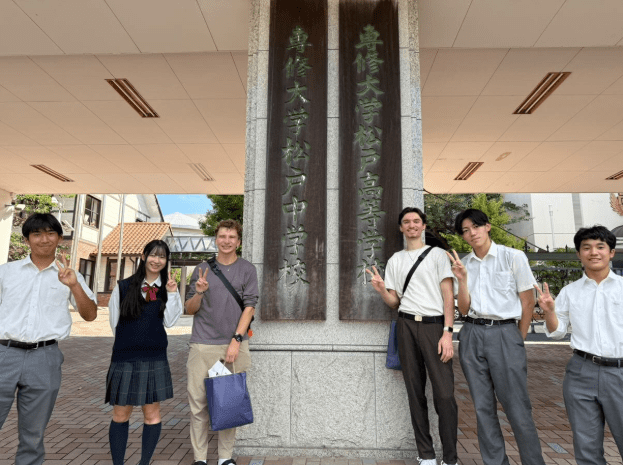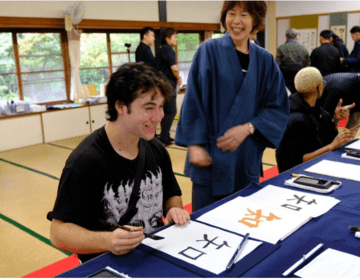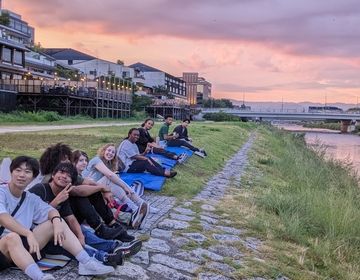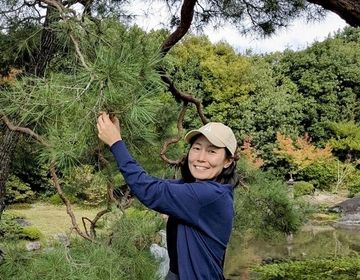Full Circle: What I took home from Japan
Written by John Dawes
The chance to go abroad to a foreign country is a rare opportunity. According to a 2023 Pew Research study, 23% of Americans have never left the country, and very few Americans are able to justify being abroad due to cost and time restrictions. Fortunately, I have had the opportunity to travel overseas twice, and both times I visited Japan.
The first time I visited Japan was in the summer of 2024, when I participated in CIEE’s summer abroad program in Kyoto. I had always wanted to study abroad, and as part of Doane University’s honors program, it was required that one study abroad if one wanted to graduate with honors. Doane also footed the cost of my study abroad program, if you keep your GPA up to par, of course.
My time abroad was nothing short of magical. Our block was filled with a group of talented and driven students who were lifelong learners, our teachers were earnest in their fields of study, and their passion was something we easily could buy into, and the staff kept everything running smoothly and granted us opportunities to see Japan in ways we never could have imagined. I could spend all day talking about my first time in Japan; however, it is not what this article is about.
My second time in Japan was under much different circumstances. I was fresh out of college and made a pact with a friend that stipulated that if I was unable to find a job after working during the summer, I would go with him on his maiden voyage to Japan. After a long job search, nothing seemed to stick, and I figured, “Well, I am 22 with plenty of money saved up, I should go back to a place I loved and share it with a friend.”
I have plenty of stories and places I want to talk about. Climbing Mt. Takeo, seeing the deer in Nara, going to Monkey Island in Yokohama, or the hustle and bustle of Osaka and Tokyo. But I have three stories that best encapsulate my time in Japan and how it has shaped me.
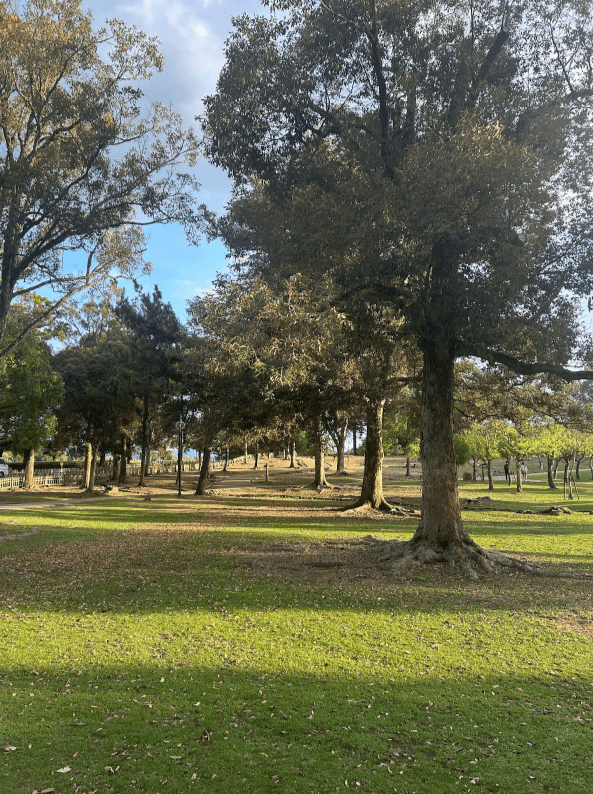
The first has to do with one of the places we went to visit. Okutama is about two hours by train out of Tokyo. It is completely tucked into the mountains; it’s almost surreal going from the hustle and bustle of one of the busiest cities to going to a place that feels completely still. In Okutama, the mountains tower over you, the lake feels more like an ocean that was placed thousands of feet into the air, and you feel incredibly small. My mouth was open in sheer amazement for most of my time there. While in Okutama, we saw the sights, we crossed the pedestrian bridge over the lake, we explored some of the shrines in the area, and we just absorbed all of the nature.
When I was in Japan for the first time, I took a course on religion, and within the course, we talked often about how Shinto has such a reverence for nature and the land in its practices. With Shinto being the native religion of Japan, I, of course, had little to no knowledge of its practices or its beliefs, but I could easily understand nature and its importance to the faith. In my mind, I understood the mountains, lakes, rivers, and forests to be akin to cathedrals, their sheer size and majesty giving you a sense of awe.
Okutama was surreal in that sense; it felt profoundly holy. For someone who was raised in the Midwest of America, the mountains and their towering forests, and coursing rivers make my chest heavy and my eyes water. Their beauty is something I rarely see, and when you are in a place like that, it makes sense to build shrines that commemorate and celebrate that land. It was a risk going to Okutama – a place that some might consider a country bumpkin town that distracts from the main attractions in Tokyo or the larger cities, but when I think about Japan, I imagine myself sitting on the large overlooking the lake, seeing the mountains high above me, the sheer greenery, and feeling the cold wind. The best places in the world aren’t the ones that speak to you, that wash over you, and make you realize how small you are in this vast world.
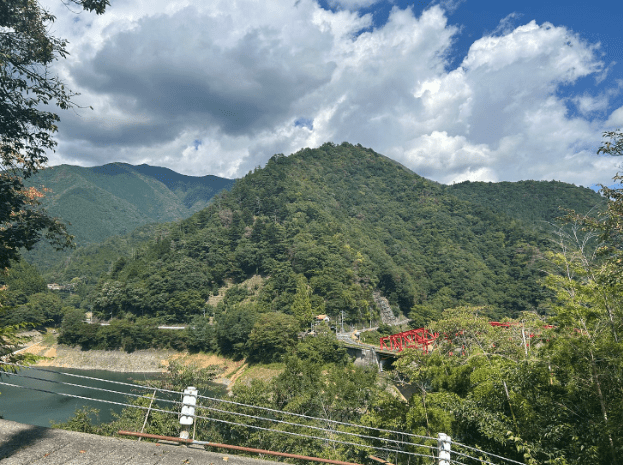
Okutama was a cathedral that I learned to see, feel, and hear through exposure. The National Stadium in Tokyo was a much more obvious place of worship for me as an avid track and field fan and former athlete; it spoke to me immediately, in fact. On my first day in Japan, during my run, I accidentally ran into the stadium and was immediately wowed by it. The Stadium was housing the World Track and Field Championships, where all the best athletes in the world compete on the global stage in hopes of becoming the world champion in their respective events.
Track is a sport that I competed in while in high school and college. It brought me closer to my brothers, and it even made me a lifelong friend with a former study abroad student, Ryan Schriener, a middle-distance runner at the University of Iowa. If I were on a pilgrimage of running, then the World Championships would be my Mecca.
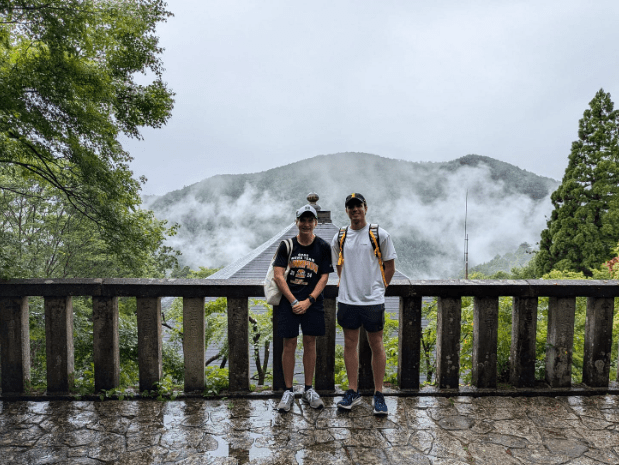
Immediately upon entering the front gates, I was star-struck. The size of the crowd, the power behind the throws and jumps, the speed of the runners, every competitor was putting on for their nations in hopes of capturing the elusive title of World Champion, and each one of us spectators treated each other like peers, united in our shared love of track and field. I met and talked to so many people from around the world while at the World Championships, and I even met them outside of the stadium as well. Whenever I was in Tokyo, I would run by the stadium – believing it offered me some good luck or fortune for my running, and I would spot eager, avid runners, eager fans waiting for the gates to open, and even the competitors doing a morning jog or workout in preparation for their events later that night.
When I was in Kyoto, I wrote for my school newspaper about how running made me feel connected to the city and how I could connect with my peer students who also ran. I think that running by that stadium, going into the stadium to see athletes compete, and meeting other fans and admirers of track and field brought me closer to so many people from all over the world. For a moment in that stadium, it did not matter what nationality you were, why you were there in that stadium, or what events you wished to see or compete in. In that stadium, you were connected with the rest of the world, and the world cheered you on.
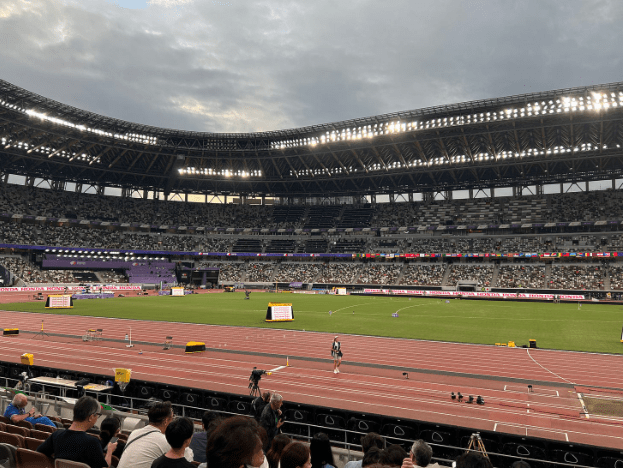
My final story is the genesis of how I ended up in Japan in the first place for my study abroad. While at Doane University, we have a summer program called Adventure Zone that brings Japanese students from Senshu University Matsudo, to our school, in the hopes that their time in America will strengthen their English skills. When I first did the program in 2023, it left such an impact on me that I decided almost immediately that I had to study abroad in Japan. Upon completion of the program again in 2025, I knew that if I went to Japan again, I had to make it a priority to visit their school.
Senshu University is located in Matsudo, slightly outside of Tokyo. I informed the principal of the school we were attending, and he gave us a tour of the campus, as well as gave me the opportunity to see and visit with all my former students I instructed during Adventure Zone. The visit was excellent, everyone’s kindness was endless, and we even got invited back to their school for the school festival that the students were throwing.
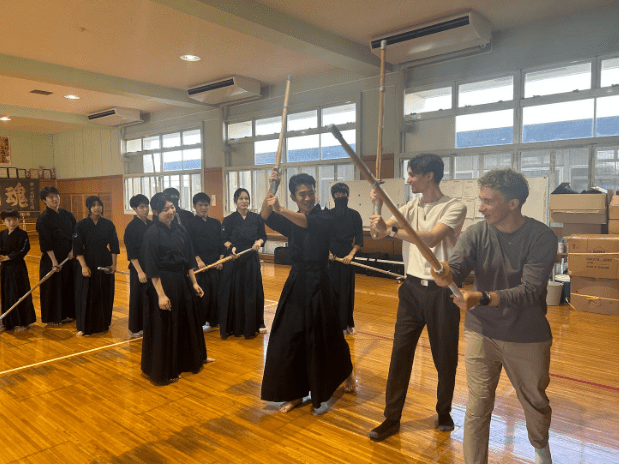
But the story of Senshu has more to do with the fact that upon arriving back in America, Principal Hikaru Gomi offered me a job at the school in hopes that I would help coordinate the Adventure Zone program and help students make their way to Crete, Nebraska and be put in front of the very students I worked side by side with. And this story with Senshu is the same story of why I am writing this article here for CIEE, because during my study abroad, I met so many amazing people that when I made my way to Kyoto, I made sure to see them again. It’s the same story of the World Championships, where I leaned into the idea of becoming a worldly citizen and joining people in our shared love of track and field. It’s the same story of my time in Okutama, where I felt connected to the nature around me.
It is the story of connection; of how, despite the winding roads we all take, the opportunities you can create by taking paths you never even knew existed can bring you to places and people so fantastic that it changes your life. If I take this opportunity to join the staff at Senshu, it will be my third year in a row going to Japan; how many people in the world get to say that? Not many, I wager, but all of that is possible because I met some students and staff at a summer camp and took a leap of faith to visit a country I couldn’t read or speak. That’s the whole purpose behind something like a study abroad program, is it opens up your world to a whole host of different possibilities that you never knew existed. So thank you, CIEE Kyoto, hopefully I see you all again soon!
Related Posts
The Heralds of Himeji
Written by Charlie Kleban Early on a morning in late October, I woke up to meet with the rest of my group so we could depart from our hotel on... keep reading
A Perfect Day Off in Kyoto
Written by Izumi Wada Hello everyone! My name is Izumi, and I am the Senior Program Coordinator at CIEE Kyoto. I moved back to Kyoto a little over two years... keep reading
Moments That Stay Forever
Written by Mie Huntley Hi, I’m Mie Huntley, a College Program Coordinator at CIEE Kyoto. I first joined the team in June 2025 as a seasonal staff member supporting the... keep reading
